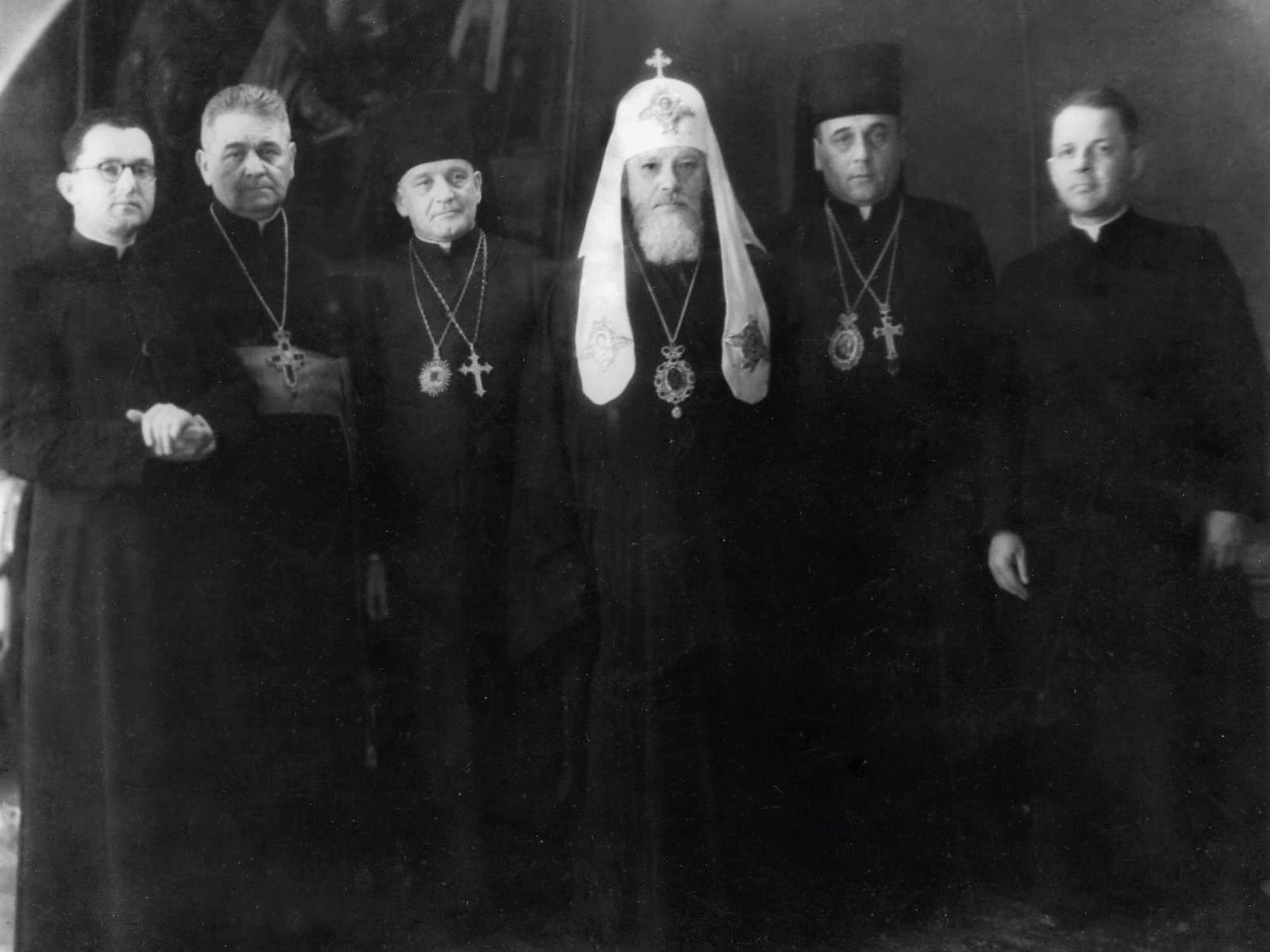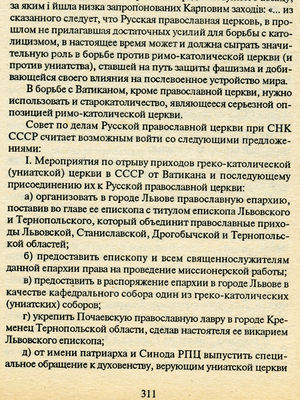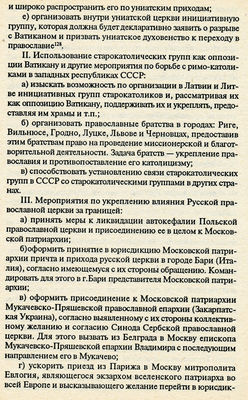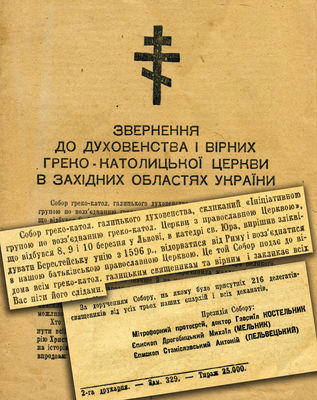7. Pseudo-council and liquidation 1946
World War II was one of the most difficult periods in the history of the Ukrainian Greek-Catholic Church. In 1939, Nazi Germany invaded Poland from the west while the Soviet Union invaded from the east and seized western Ukraine. At that time, the UGCC had 2387 parishes and 3.6 million faithful, 2352 diocesan priests, 31 male and 121 female monasteries and monastic houses. The Greek Catholic Theological Academy in Lviv and three seminaries, which enrolled 480 students, functioned under the tutelage of the Church.
The Soviet government perceived the Ukrainian Church as a serious obstacle in the implementation of Sovietization of the region. That is why Stalin’s regime immediately began to attack the UGCC. The new authorities organized a broad campaign of persecution, intimidation and defamation of the Greek-Catholic bishops and clergy, accusing them of having links with the nationalist underground and “anti-Soviet” centers abroad. Leadership of the Church had to take into account these new realities. On December 22, 1939, with the permission of the Vatican, Metropolitan Andrey secretly ordained Fr. Yosyf Slipy (1892–1984) as bishop with the right of succession to the Galician metropolitan seat.
 The First Page of the NKVD’s Case Against Josyf Slipyj
The First Page of the NKVD’s Case Against Josyf Slipyj
At the very beginning of the war between the USSR and Nazi Germany in 1941, western Ukraine was occupied by the German army. On June 30, 1941 the first representatives of Ukrainian organizations proclaimed the Act of Declaration of Ukrainian Independence and Metropolitan Sheptytsky expressed support for this initiative. But two weeks later the German occupation authorities began repressions against the Ukrainians. Immediately, the Greek-Catholic Church began clandestine activities, in particular the St. George Cathedral and monasteries in the care of Metropolitan Andrey sheltered hundreds Jews.
After the return of Soviet forces to western Ukraine in 1944 and the death of Metropolitan Andrey (November 1), the UGCC leadership made an attempt to achieve a modus vivendi with the Soviet state, i. e. the possibility to coexist despite fundemental differences of viewpoints. To this end, in December 1944, Metropolitan Yosyf Slipy sent an official delegation headed by Archimandrite Clement Sheptytsky to Kyiv and Moscow for the purpose of legitimizing the status of the UGCC in the USSR. However, on March 15, 1945, Stalin approved secret instruction No. 58, drafted by G. Karpov, Chairman of the Council for Affairs of Russian Orthodox Church. The first section of this document was titled “On the measures aimed at the estrangement of the Greek-Catholic (Uniate) Church in the Soviet Union from the Vatican and its subsequent annexation to the Russian Orthodox Church.” The instructions read: “Organize an Orthodox eparchy in Lviv and give its head the title of Bishop of Lviv and Ternopil, which will bring together the Orthodox parishes [which did not exist] of Lviv, Stanislav, Drohobych and Ternopil oblasts.” Another provision discussed the need to create “inside the Uniate Church an initiative group, which should declaratively express a break with the Vatican and call the Uniate clergy to convert to Orthodoxy.”
By that time in the territory of Ukraine the UGCC had the structures of the Archdiocese of Lviv, Stanislav most Mukachevo eparchies and most of the Przemysl eparchy, divided by the new border with Poland.
In accordance with this clearly defined plan, punitive organs fabricated a case about alleged “collaboration with the Nazis” and “anti-Soviet activity” of the UGCC hierarchy and clergy. On April 11, 1945, Metropolitan Yosyf Slipy and later other bishops were arrested, and control passed into the hands of the Sponsoring Group established in late April 1945 and led by Fr. Havryil Kostelnyk, which urged “reunification” of the Greek-Catholic Church with the Orthodox Church.
The so-called Lviv Synod of March 8–10, 1946, organized by the government and state security bureau in collaboration with the Sponsoring Group, unanimously adopted the resolution “to revoke the 1596 Council of Brest, to eliminate the Union, to break away from the Vatican and to return to the bosom our Mother Holy Orthodox faith and the Russian Orthodox Church.” This act from beginning to end was a true farce, so it was not valid both in terms of church law and state law. However, the Church was considered officially liquidated and its parishes and the faithful were absorbed by the ROC.
The same fate befell those parts of the UGCC that found themselves on the territory of post-war Poland. Deprived of its own hierarchy and dispersed, for several decades the Greek-Catholic community was subordinated to the Roman Catholic Church and was put under constant pressure from government authorities. In the same manner, the Greek-Catholics of Mukachevo (1949) and Presov eparchies (1950) were absorbed.



